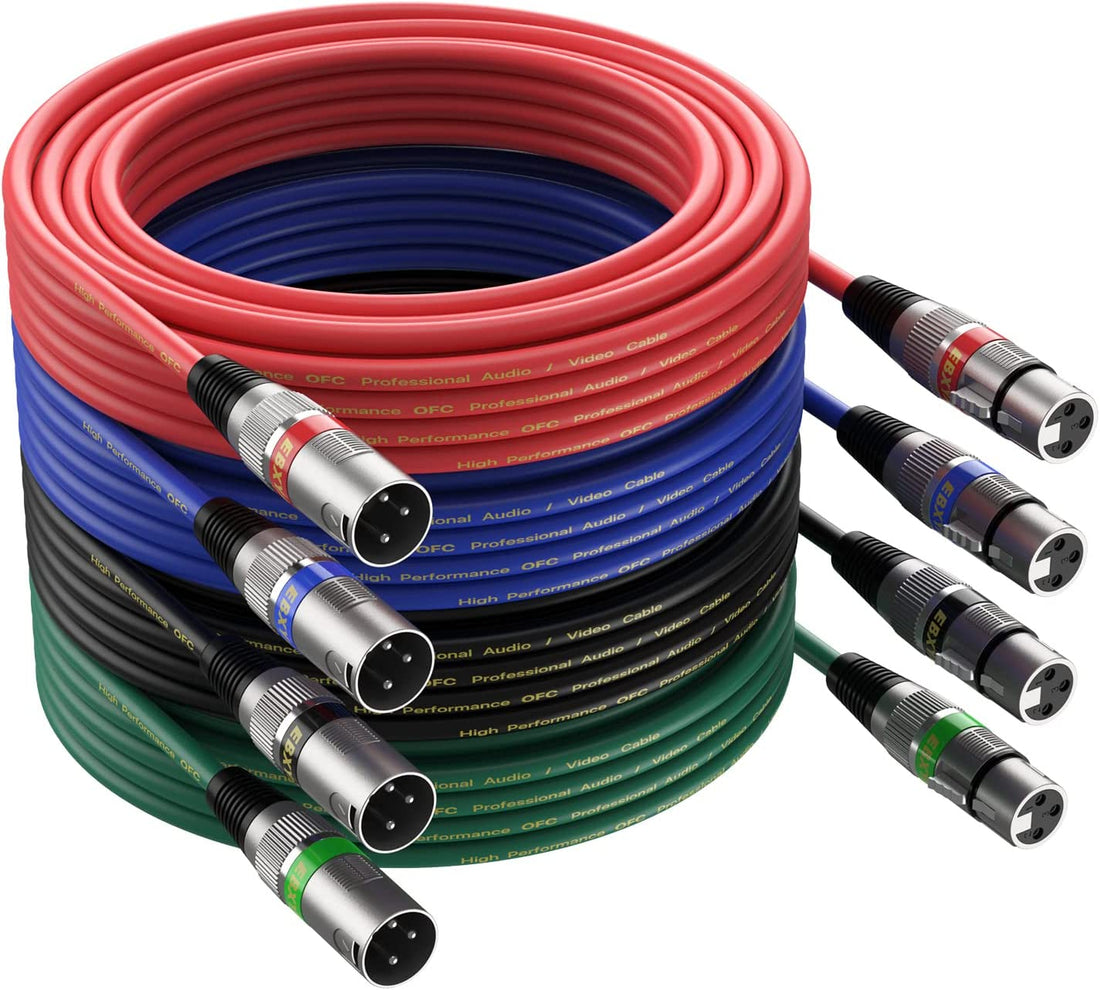
The Perfect Microphone: Unlocking Clear, Crisp Audio for Your Needs
Share
In today's digital age, where content creation and online communication thrive, having the right microphone is crucial. Whether you're a podcaster, musician, streamer, or business professional, capturing clear and crisp audio is essential. In this blog, we delve into the world of microphones, exploring their types, features, and tips to help you choose the perfect one for your needs.
1. Understanding Microphone Types
Microphones come in various types, each designed to suit specific applications. Let's explore some of the common microphone types:
a) Dynamic Microphones: Known for their durability and versatility, dynamic microphones are ideal for live performances and recording instruments. They can handle high sound pressure levels, making them suitable for loud environments.
b) Condenser Microphones: These sensitive microphones excel at capturing detailed and accurate audio. They require power (either battery or phantom power) and are commonly used in studio environments, podcasting, and vocals.
c) Ribbon Microphones: Delivering a smooth and vintage sound, ribbon microphones are delicate but offer exceptional warmth and character. They are often used in studio recordings for vocals, strings, and brass instruments.
2. Essential Features to Consider
When selecting a microphone, several features play a vital role in ensuring optimal audio quality. Here are some key aspects to consider:
a) Frequency Response: This specification indicates the microphone's range of sensitivity across various frequencies. A flat and wide frequency response ensures accurate audio reproduction.
b) Polar Pattern: The polar pattern determines the microphone's field of sensitivity. Common patterns include cardioid (front-facing), omnidirectional (all-around), and bi-directional (front and back). Choose a pattern that suits your recording environment and minimizes unwanted noise.
c) Sensitivity and SPL Handling: Sensitivity measures how well a microphone converts sound into an electrical signal, while sound pressure level (SPL) handling determines its ability to handle loud sounds without distortion. Consider your intended use and the sound sources you'll be working with.
d) Connectivity Options: Determine the type of connection your microphone requires, such as XLR, USB, or wireless. Ensure compatibility with your recording equipment or computer.
3. Tips for Choosing the Right Microphone
To make an informed decision when purchasing a microphone, consider the following tips:
a) Identify Your Needs: Determine your primary use for the microphone. Are you recording vocals, instruments, podcasts, or streaming? This will help narrow down the appropriate microphone type and features.
b) Research and Reviews: Read reviews, compare specifications, and research different microphone models within your budget. Understanding user experiences and expert opinions can guide you towards reliable options.
c) Test and Listen: Whenever possible, try out the microphones before buying. Listen to audio samples or seek demonstrations to gauge their sound quality and suitability for your requirements.
d) Budget Considerations: Set a budget range, keeping in mind that higher-priced microphones often offer better sound quality and durability. However, there are excellent options available for every budget.
Investing in a high-quality microphone tailored to your specific needs is essential for achieving professional-grade audio recordings. By understanding microphone types, key features, and following the tips mentioned, you'll be well-equipped to find the perfect microphone that unlocks clear, crisp audio and takes your content creation or communication endeavors to new heights.
1. Understanding Microphone Types
Microphones come in various types, each designed to suit specific applications. Let's explore some of the common microphone types:
a) Dynamic Microphones: Known for their durability and versatility, dynamic microphones are ideal for live performances and recording instruments. They can handle high sound pressure levels, making them suitable for loud environments.
b) Condenser Microphones: These sensitive microphones excel at capturing detailed and accurate audio. They require power (either battery or phantom power) and are commonly used in studio environments, podcasting, and vocals.
c) Ribbon Microphones: Delivering a smooth and vintage sound, ribbon microphones are delicate but offer exceptional warmth and character. They are often used in studio recordings for vocals, strings, and brass instruments.
2. Essential Features to Consider
When selecting a microphone, several features play a vital role in ensuring optimal audio quality. Here are some key aspects to consider:
a) Frequency Response: This specification indicates the microphone's range of sensitivity across various frequencies. A flat and wide frequency response ensures accurate audio reproduction.
b) Polar Pattern: The polar pattern determines the microphone's field of sensitivity. Common patterns include cardioid (front-facing), omnidirectional (all-around), and bi-directional (front and back). Choose a pattern that suits your recording environment and minimizes unwanted noise.
c) Sensitivity and SPL Handling: Sensitivity measures how well a microphone converts sound into an electrical signal, while sound pressure level (SPL) handling determines its ability to handle loud sounds without distortion. Consider your intended use and the sound sources you'll be working with.
d) Connectivity Options: Determine the type of connection your microphone requires, such as XLR, USB, or wireless. Ensure compatibility with your recording equipment or computer.
3. Tips for Choosing the Right Microphone
To make an informed decision when purchasing a microphone, consider the following tips:
a) Identify Your Needs: Determine your primary use for the microphone. Are you recording vocals, instruments, podcasts, or streaming? This will help narrow down the appropriate microphone type and features.
b) Research and Reviews: Read reviews, compare specifications, and research different microphone models within your budget. Understanding user experiences and expert opinions can guide you towards reliable options.
c) Test and Listen: Whenever possible, try out the microphones before buying. Listen to audio samples or seek demonstrations to gauge their sound quality and suitability for your requirements.
d) Budget Considerations: Set a budget range, keeping in mind that higher-priced microphones often offer better sound quality and durability. However, there are excellent options available for every budget.
Investing in a high-quality microphone tailored to your specific needs is essential for achieving professional-grade audio recordings. By understanding microphone types, key features, and following the tips mentioned, you'll be well-equipped to find the perfect microphone that unlocks clear, crisp audio and takes your content creation or communication endeavors to new heights.
